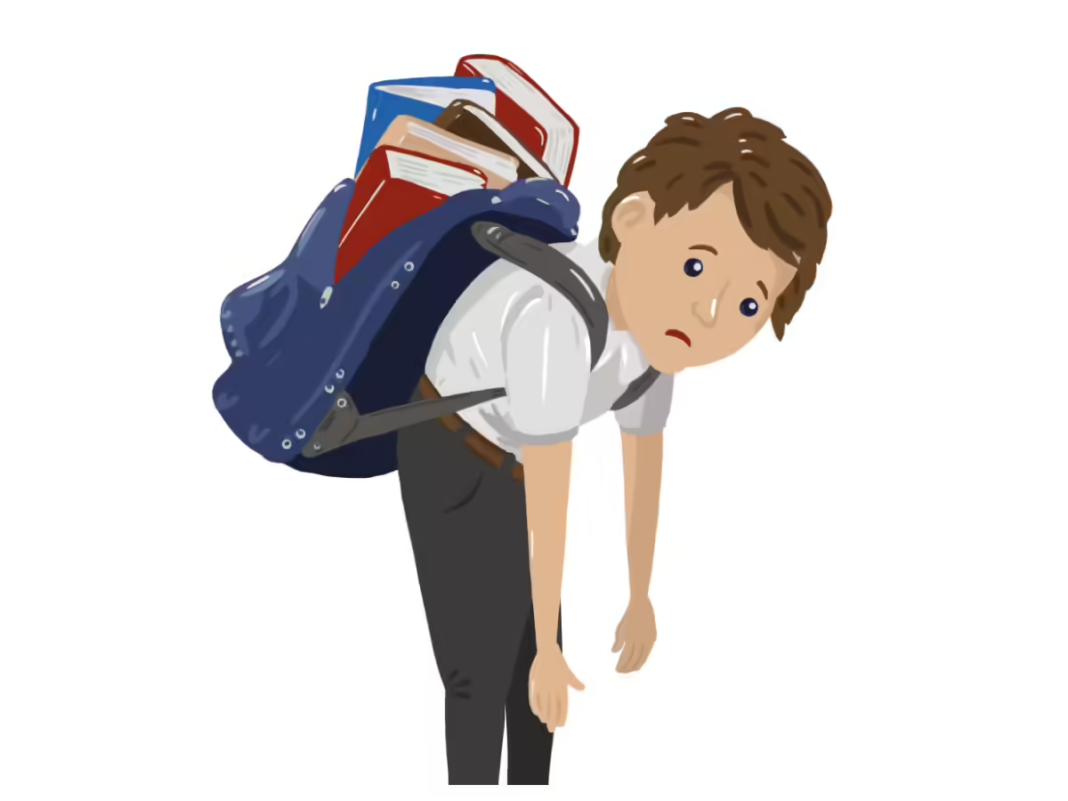Among the most frequent concerns seen by paediatricians today is back pain, shoulder discomfort, and neck stiffness in school-going children. These issues are increasingly seen in children as young as six or seven years old to school going teens— a trend that has grown steadily over the past decade across urban and semi-urban India.
The School Bag Burden
Overloaded school bags are a key contributor to postural problems and back pain in children. Studies and clinical observations show that many Indian students carry bags weighing 15%–25% of their body weight, far exceeding the recommended 10%.
Year on year, the academic load keeps increasing. With heavier textbooks, notebooks, after-school coaching materials, and even gadgets like laptops and tablets becoming part of daily schooling, children’s bags are growing heavier — not lighter.
It is increasingly common to see children aged 7–8 years presenting with mid-back pain, neck pain, and shoulder stiffness. In teenagers between 14–17 years old, the problem is even more critical. Teenagers tend to display clear postural abnormalities like rounded shoulders, forward head posture, and in certain cases, appearance of early scoliosis.
Physical, Mental, and Emotional Impact
Back pain in schoolchildren often begins as mild discomfort but can easily progress if not addressed early. Physically, it typically presents as:
- Persistent dull ache in the upper or lower back
- Shoulder and neck stiffness
- Reduced range of motion in the arms
- Tingling or numbness in hands due to nerve compression (in more severe cases)
The impacts, though, are not solely seen in the body, only. Children with persistent pain experience emotional and psychological changes. In adolescents, these changes manifest as low self-esteem, inattention, increased agitation and depression, and reduced nurturing of hobbies and exercise. Disturbed sleep caused by pain can impact emotional status and school performance as well.
The Youngest Cases and Increasing Frequency
Back pain related to posture has been diagnosed in children as young as five or six years old, sometimes as a result of carrying heavy trolley bags also. Although these wheeled bags may look like a helpful solution, dragging them upstairs and over uneven surfaces can strain a child’s developing spine. If untreated, back issues in teens may lead to chronic musculoskeletal problems that could require surgery, braces for postural correction, or extensive physical therapy.
Why Is the Load Increasing?
The rise in school bag weight is linked to increasing academic pressure, multiple subjects, heavier reference materials, and an absence of digital or locker facilities in many schools. Teenagers also often carry bags on one shoulder for style, which worsens the postural imbalance.
Addressing the Problem
This is no small problem that can be overlooked; concerted efforts by schools, parents, and physicians are needed. The solutions are:
- Changes to School Policy: Regular weighing of bag weights must be done in schools and lockers or storage areas must be made available wherever feasible.
- Curricular Changes: Electronic textbooks and electronic submission of assignments can decrease physical weight.
- Parental Awareness: Parents need to check bag weight from time to time and make children carry only essential items each day.
- Reminding to maintain posture: Children, especially while carrying bags and sitting down, need constant reminding and instruction about good posture.
- Encourage Physical Fitness: Regular exercise encourages proper posture by reducing school bag strain and builds core strength.
Having to endure these stresses early on can lead to chronic problems, impaired range of motion, and nerve issues because of the still developing bones and muscles. It is much simpler and effective to prevent damage before it takes place when compared to treating damage once it has been caused.
Therefore, the issue of heavy school bags is fundamentally one of a child’s physical and mental development rather than one of inconvenience. Children will become healthier, happier, and more self-assured if it is addressed now. To ensure that no child bears a burden that is greater than their own, both literally and figuratively, the community, parents, and schools must work together.
(The author, Dr. Akshay Mehta, is a Senior Consultant- Neonatology & Paediatrics, at Motherhood Hospitals, Greater Noida.)




